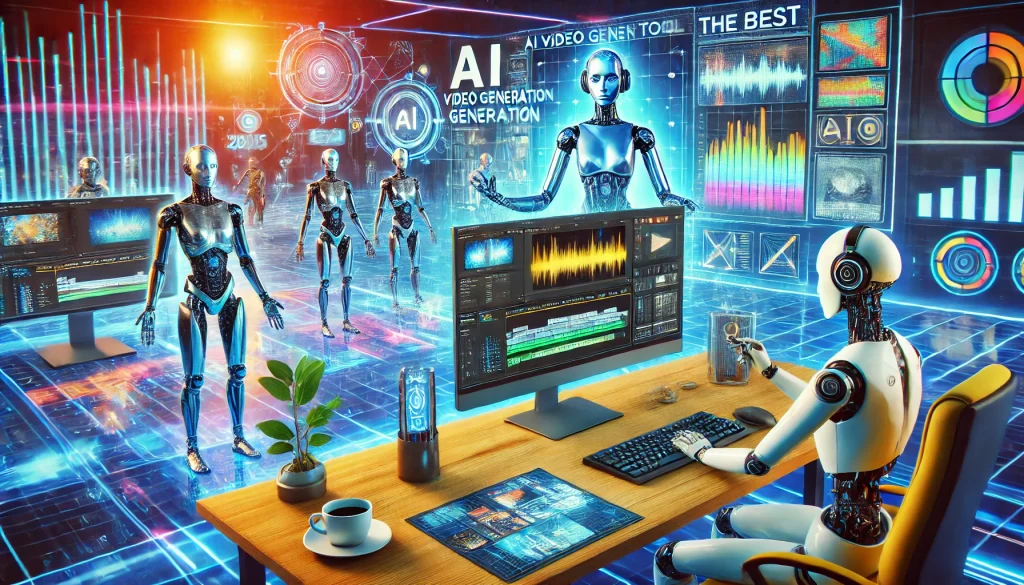In the ever-evolving digital age, the capability to reach a global audience is crucial. For digital creators, the question of how to translate AI videos effectively is a pressing one. Understanding how to translate AI videos can open doors to new markets, enhance viewer engagement, and increase content accessibility. In this article, we’ll explore the methods and technologies available to translate AI videos, focusing on strategies that can help your content resonate with an international audience.

The Importance of Translating AI Videos
Translating your AI videos allows you to connect with audiences that speak different languages. This expands your reach and boosts your content’s SEO by making it accessible to a wider audience. Moreover, translated videos foster inclusivity, ensuring that language barriers do not impede access to valuable information.
Expanding Your Audience
One significant benefit of translating AI videos is the potential to tap into new demographics. By offering content in multiple languages, you can attract viewers from diverse regions, increasing your overall audience size and engagement levels. This strategic move can enhance your brand’s global presence.
Improving SEO Rankings
Translating your content contributes to better SEO performance. When your videos are accessible in various languages, they have a higher chance of appearing in search results for those languages. This increases visibility and can lead to more organic traffic.
Tools to Translate AI Videos
Several tools are available to help you translate your AI videos efficiently. These tools can automate the translation process and provide accurate results. Some popular choices include:
Google Translate
A widely used tool that offers translation services for text and audio. While it may not be perfect, it provides a quick and easy way to translate video transcripts.
DeepL Translator
Known for its high-quality translations, DeepL is a great choice for creators seeking accuracy. It supports multiple languages and offers a user-friendly interface.
Amara
Amara is a collaborative platform that allows users to create and translate subtitles. It’s ideal for video creators who wish to provide multilingual subtitles easily.
Steps to Translate AI Videos
Translating AI videos involves several steps to ensure accuracy and effectiveness. Heres a step-by-step guide:
1. Prepare Your Video
Before translating, ensure your video is high-quality and the audio is clear. This will make the translation process smoother and more accurate.
2. Transcribe Your Video
Create a transcript of your videos audio content. This serves as the basis for translation and helps maintain accuracy in the translated versions.
3. Choose a Translation Tool
Select a translation tool that meets your needs in terms of languages supported and translation quality. Tools like DeepL and Amara are excellent choices.
4. Translate the Transcript
Use your chosen tool to translate the transcript into the desired languages. Ensure that the translations maintain the original message and tone.
5. Sync Translations with Video
Once translated, synchronize the subtitles or audio with the video. This ensures that the translations appear at the right time and improve viewer comprehension.
Challenges and Solutions in Translating AI Videos
While translating AI videos offers many benefits, it’s not without challenges. Here are some common challenges and their solutions:
Maintaining Context
Translations can sometimes lose context, leading to misunderstandings. To prevent this, work with native speakers or professional translators who can ensure context is preserved.
Handling Technical Terminology
AI videos often contain technical jargon that can be difficult to translate accurately. Using industry-specific translation tools or consulting experts can help maintain accuracy.
Ensuring Cultural Relevance
Translations should be culturally appropriate to resonate with different audiences. Consider cultural nuances and adapt translations accordingly to avoid potential misinterpretations.
Future of AI Video Translation
The future of AI video translation looks promising with advancements in technology. AI-driven translation tools are becoming more sophisticated, offering better accuracy and speed. As these tools evolve, the process of translating AI videos will become more streamlined and accessible to creators worldwide.
Conclusion
Translating AI videos is an essential strategy for digital creators looking to expand their reach and enhance content accessibility. By understanding how to translate AI videos and utilizing the right tools and strategies, you can effectively communicate your message to a global audience. Embrace the potential of video translation and watch your content thrive across borders.

FAQ Section
1. What are the best tools for translating AI videos?
Some of the best tools include Google Translate, DeepL Translator, and Amara. Each has its strengths, so choose based on your specific needs.
2. How can I ensure the accuracy of my video translations?
Work with native speakers or professional translators to review translations. Additionally, use high-quality translation tools that are known for their accuracy.
3. Why is video translation important for digital creators?
Video translation is crucial for reaching a global audience, improving SEO, and ensuring content accessibility across different languages and cultures.
For more insights on AI’s impact in digital creation, you can read this guide.







